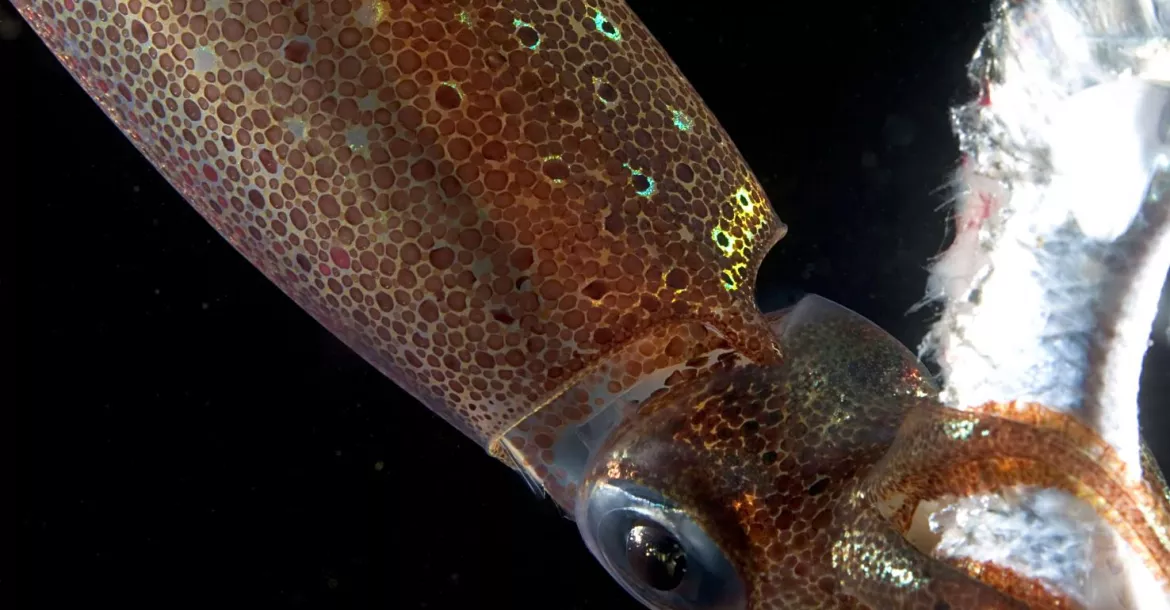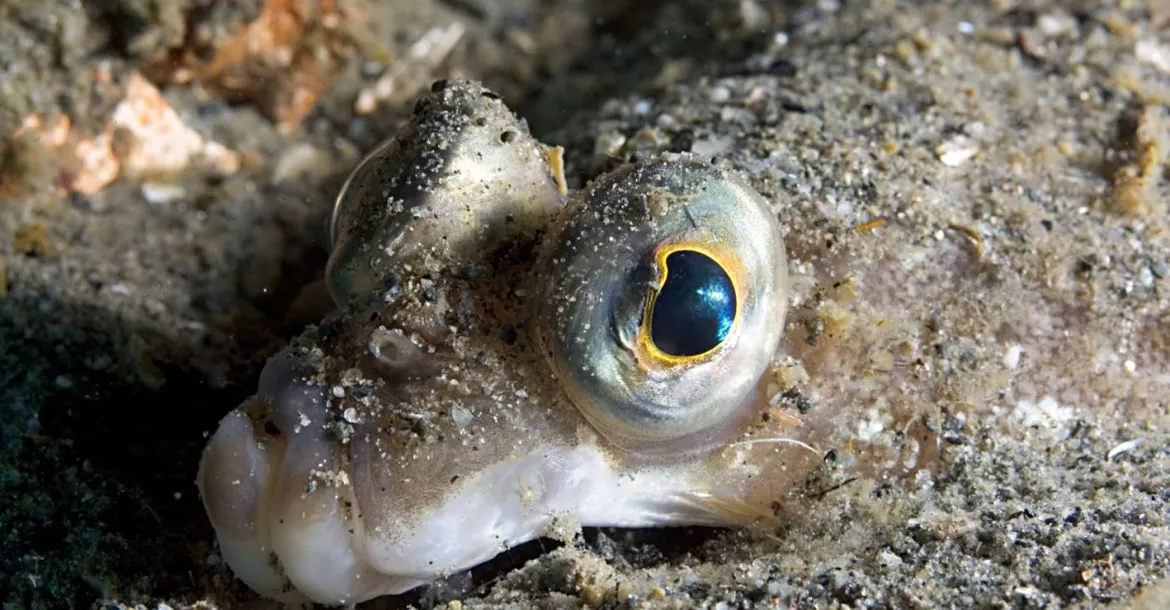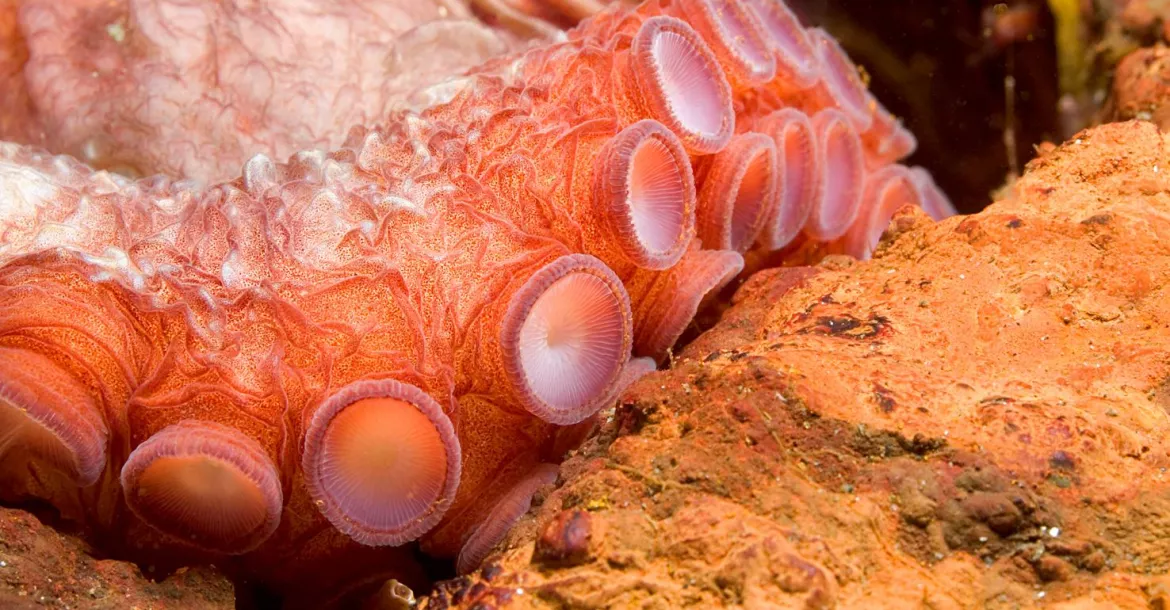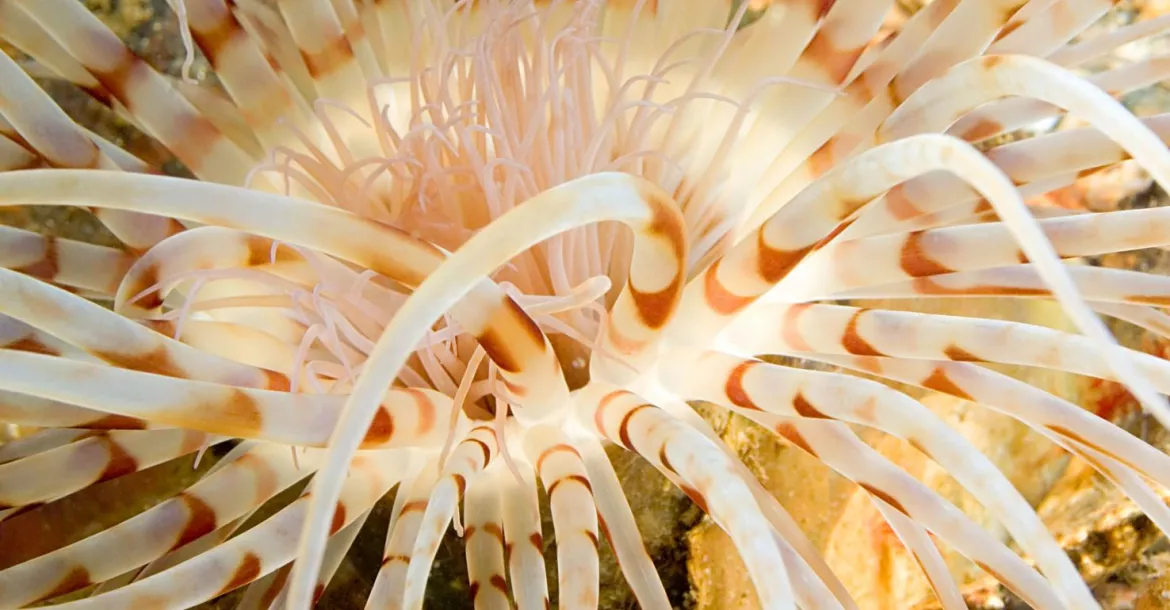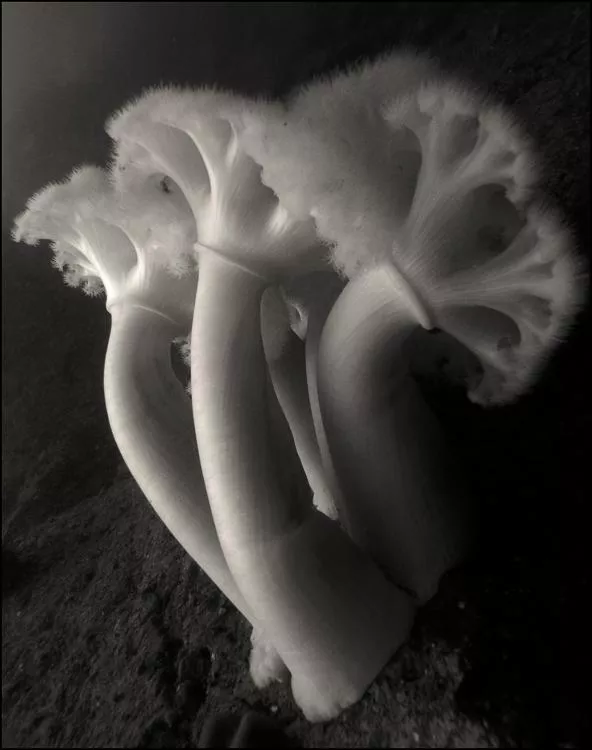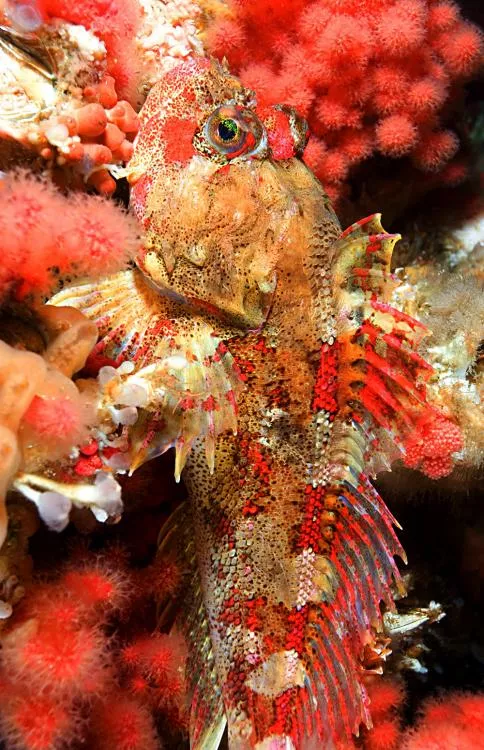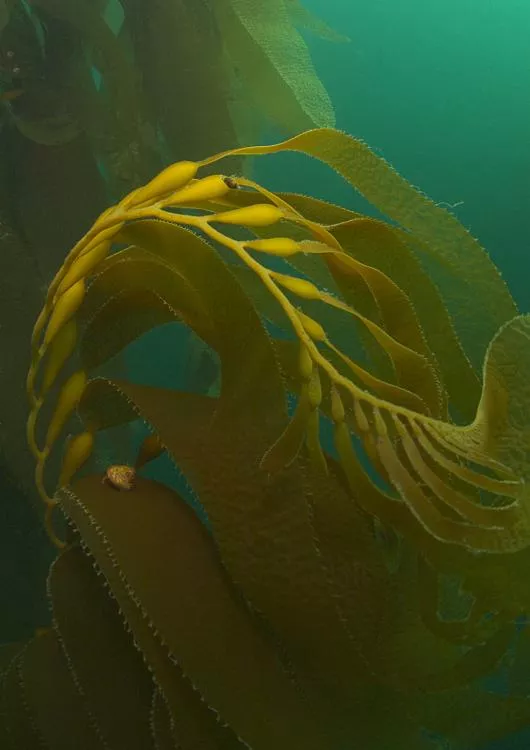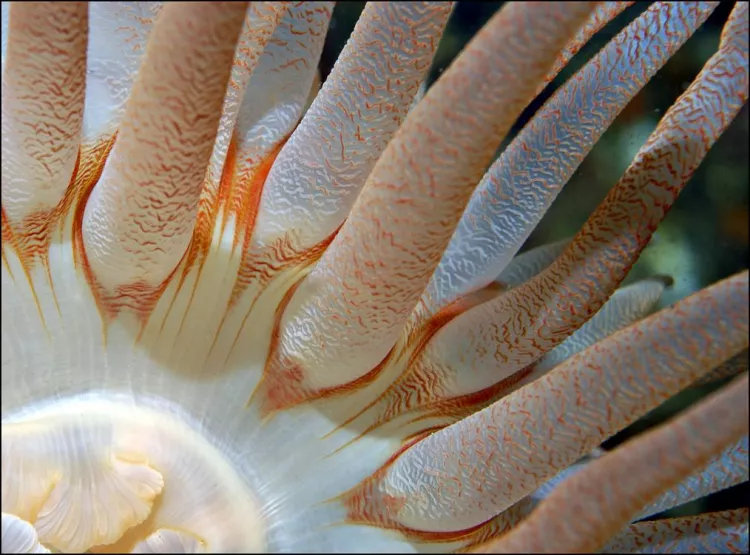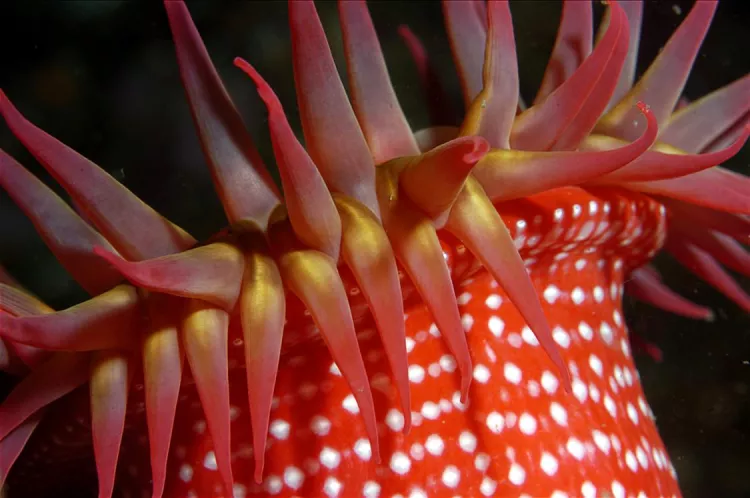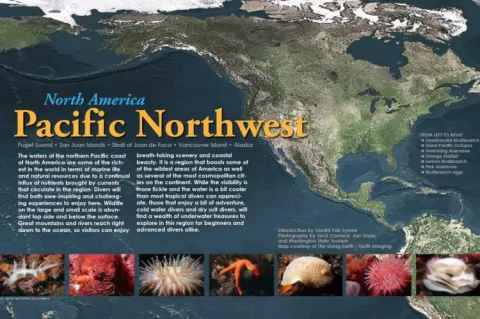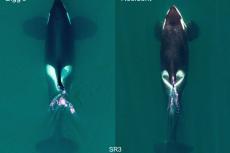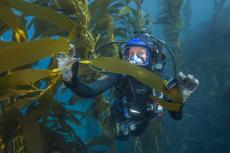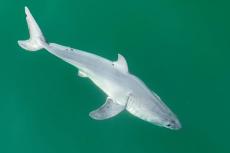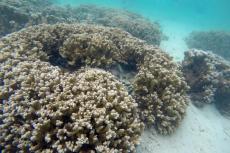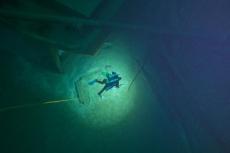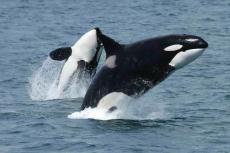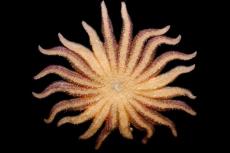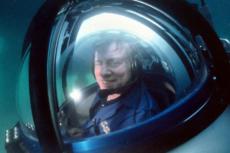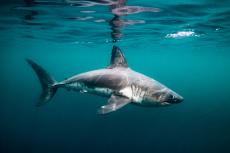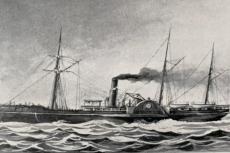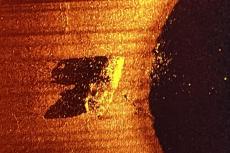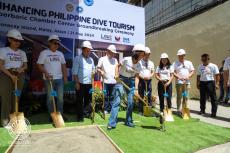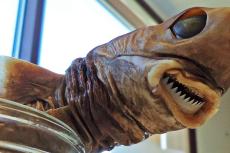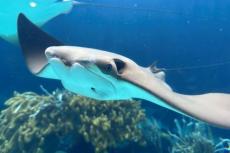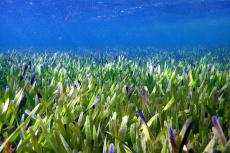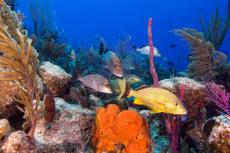Puget Sound • San Juan Islands • Strait of Juan de Fuca • Vancouver Island • Alaska.
The waters of the northern Pacific coast of North America are some of the richest in the world in terms of marine life and natural resources due to a continual influx of nutrients brought by currents that circulate in the region. Divers will find both awe-inspiring and challenging experiences to enjoy here.
Contributed by
Picking the right dive site at the right time of year and the right time of day with the right dive operator, those of us who are avid underwater photographers can capture some fantastic images on film. The people who live in the Pacific Northwest are friendly and casual, helpful folk. Neighborhood operators, who know the region like the back of their hands because they dive these sights for personal enjoyment weekly, are very happy to help newcomers enjoy the riches of the underwater realm found practically in their backyards.
The complete scope of diving in the Pacific Northwest cannot be covered in one article alone, however, highlights of both well known dive sites and lesser known sites can be provided here for curious dive travellers who are yearning to explore the Wild West.
We start in the Puget Sound, the sea of emerald islands located in the northwest corner of the state of Washington, where the cities of Seattle and Tacoma border the lower and upper sound. Getting the inside scoop from local dive charter operator, Mike Ferguson of Porthole Dive Charters, readers will learn about the numerous places to dive and observe marine life, such as Orca whales, close to the cities and out among the gentle islands.
We, then, head north to the Strait of Juan de Fuca, Neah Bay and Cape Flattery at the most western point of the contiguous United States where the Makah Nation, the Native American tribe indigenous to the region, make their home. Local diver and member of Marker Buoy Dive Club, the largest dive club in Seattle, Jack Connick, gives us a bird’s eye view of the lesser known dive spots in the area.
Continuing northwords, our correspondent, Jon Collins, explores the amazing diving in and around Vancouver Island in British Columbia, Canada, a fascinating place with a complex history that blends European, American and native cultures, nestled in a magestic natural setting.
Finally, we head up to Alaska, where correspondent, Barb Roy, shares her dive adventure in Prince William Sound and points along the southern Alaskan coast. A land of dramatic extremes, Alaska provides the visitor with a taste of how the planet was in its most pristine state. There, the midnight sun and the Northern Lights are a constant backdrop to the wilderness and remote cities that dot the southern coast of this region, which reaches up into the Arctic circle.
Puget Sound
For folks in Seattle and Tacoma, the Puget Sound is a neighborhood playground for divers, snorklers, hikers, whale watchers, anglers, kayakers and other outdoor enthusiasts. Because of the nutrient rich currents, the sound is abundant with sea life. Residents in the cities regularly spend time during the work week and weekends enjoying this beautiful area. What follows are a few high points regarding the incredible diving to be found so close to an urban area.
Although the northern end of the Puget Sound is known for several outstanding dive sites, south and central Puget Sound also has a good number of interesting sites with diverse and abundant sea life.
Local divers including Jon Gross and Keith Clements, authors of a comprehensive online guide to over 45 sites in the Puget Sound, The Marine Life Index at seaotter.com, dive these areas regularly. They point to Point Defiance as one of the favourites. There is a massive shear wall at this site to explore. However, due to depth and currents, it is considered an advanced dive site. The recommended approach is to dive the West Wall on the flooding tide and then the North Wall in the ebbing tide.
The terrain of this site is uneven and full of life. Giant Pacific Octopus, Mosshead Wabonnets and Grunt Sculpins can be found here. Divers can also find Wolf-eel, Striped Sea Perch, Red Irish Lords, Buffalo Sculpins, Brown Rockfish, Ratfish and Painted Greenlings. Orange Sunflower Stars add brilliant colour to the seascape. Point Defiance is a popular fishing spot, so divers should be careful of old fishing sinkers, lures and line lying on the seafloor as well as the boat traffic.
Shore Dives
There are popular shore dives in the southern and central sections of the Puget Sound including Three Tree Point, which holds diverse marine life in a “junk yard” reef and eel grass beds—on rare occasions, there may be a six-gill shark looming here; Titlow Beach, a good place to check out sea life among pilings; Deadman Wall where you may have a rare encounter with eel-like creatures called Red Brotulas; Seahurst Park, a subtle site that is noted for being a fine place to find various large nudibranchs and sea pens; Les Davis Reef where you can find huge schools of perch; and Sunrise Beach, known for friendly Wolf-eels and large-sized Giant Pacific Octopus.
Edmonds Underwater Park
Edmonds Underwater Park is an artificial reef developed in the harbour of Edmonds by a few heroic members of the community who took interest in marine conservation and diversity. Edmonds is a quaint little northwestern town of small cafés and boutiques on a gentle slope leading down to the coast a few miles north of Seattle. It is probably the best-known dive location in the state.
The dive park is located just north of the ferry landing at Edmonds. It offers terrific diving for several reasons. At this site, the depths are shallow and there is an absence of strong currents, the beaches are well kept and scenic, the facilities are very good and include showers, there is easy parking, lots of different places to grab a bite to eat between dives, a well-equipped dive shop nearby called Underwater Sports, and close proximity to Seattle.
The marine life here is in a unique condition and serves as a testament to how it can bounce back if people give it a chance. The dive park is a favourite for beginning divers as it has a whole lot to see in easy dives. The reef is an extensive organized hodge-podge of attractions marked by buoys including an old dry dock, wooden boats including a tugboat “The Triumph”, tire collections, concrete blocks, rock piles, wire hoops and other materials. It is also a site with a large number of enormous Lingcod that grow up to 4 or 5 feet long (1-2 m). Other species include Cabezon, Quillback and Copper Rockfish, Plumose Anemones, Pile Perch, Striped Sea Perch, Shiner Perch, gunnels, Sailfin Sculpines, Rock Soles, some Red Irish Lords, Ratfish, lots of shrimp, crabs and massive Sunflower Stars.
Waterman’s Wall
Considered one of the best wall dives in the state, Waterman’s wall is located in the Port Orchard area, just south of Bainbridge Island.
The terrain consists of shear faced walls, long ledges, rock piles and boulders, large cracks and crevices. Marine life on the wall is abundant and representative of why the Puget Sound is considered by many divers to be a Mecca of marine life. Divers can find Giant Barnacles, scallops, and an assortment of sea stars including Leather Stars, Vermillion Stars, Morning Stars, Sunflower Stars and Pink Short Spined Stars. Brown, Copper and Quillback Rockfish are also present here as well as Lingcod and Buffalo Sculpins. Divers should bring a good light torch to enjoy the color of this site where you will also find orange, purple and yellow sponges and yellow Sea Lemon Nudibranchs.
North Puget Sound
There are several spectacular dive sites in the northern end of the Puget Sound. Keystone is an extremely popular site among local divers who crowd there on the weekends. Octopus can be spotted here. Two hours drive north of Seattle is an inspiring wall dive at Skyline Marina. Experts say that it is a shore dive that provides plenty of subject matter for macro photography as it has a plentiful and colourful array of invertebrate life including Candy-Striped shrimp, Umbrella crabs, Giant barnacles, Crimson anemones, hard corals and sponges.
Divers who know the region say that one of the best dives in the Puget Sound is located at Possession Point Fingers, which can be reached by boat from Whidbey Island. Considered an advanced dive due to strong currents, the site sports a unique terrain of sheer vertical walls with countless caves sheltering Lingcod, rockfish, Wolf-eel, rather large Giant Pacific Octopus, and a splendid symphony of colourful nudibranchs including Red Nudibranchs, Orange Spotted Nudibranchs, Sea Lemons, White Lined Dironas, Yellow-Edged Cadlinas and Hudson Dorids.
Wreck Dives
Although not a major attraction of the region, there are several wreck dives in the Puget Sound. Large sunken wooden barges can be explored on the northwest side of Gedney Island, a small island situated between Whidbey Island and the mainland. A 70-foot long wooden boat is wrecked at a site called “The Boss” located in Blakely Harbor. A vertical barge and tugboat can be explored at the Shilshole Bay and West Point area. There are also barge wrecks at Seahurst Park and Maury Island.
San Juan Islands
Local divers describe diving the San Juan Islands as an exercise in variety. According to Dareld and Janine Clark who wrote the guide, Diving the San Juans (Evergreen Pacific Publishing), there are over 60 dive spots in the San Juans, many of the more exciting ones accessible only by boat.
Experts describe the strata, which supports plant and animal life in this area, as a combination of soft mud and sand as well as rocky formations upon which marine ecosystems have evolved. The area teems with life from some of the largest marine mammals, humpback, minke and orca whales, to loveable harbour seals and sea otters, to the tiniest of sea life still viewable by the naked eye.
Divers will find an abundance of colours and textures among the many species that call the San Juans their home including sponges, barnacles, pectin scallops, tiny orange cup coral named staghorn bryozoa, pink-tipped, white plumed and orange anemones, tiny ostrich plumed hydroids—a close relative to the jelly-fish—hairy sea squirts and giant red sea urchins, rockfish, quillback rockfish and kelp greenlings, warty sponges, purple-hinged rock scallops, haunting protrusions of dead man’s fingers, banded feather dusters, tiny creeping pedal cucumbers with bright red tentacles, basket stars and tiny black and white brittle stars, brightly coloured rose star and vermillion stars, sea cucumbers, red cancer crabs, nudibranchs and a host of other species.
Fish that live in this area include lingcod, cabezon, painted greenling, black cod and flounder. You will also find wolf-eels, brilliant blue striped seaperch schooling among cliffs, grunt and sailfin sculpin, spiney dogfish. There are Dungeness and red rock crab, Puget Sound king crab, kelp crab and sunflower stars in brilliant shades of pink, orange and purple, red sea gherkins, sea pumpkins, vari-colored worms, reddish gum boot or giant chiton, Mosshead Warbonnet, Pacific electric ray, porpoise and octopus. Bull kelp grows quite large here and sea pens loom up from the depths.
Underwater photographers recommend Goose Island and Skipjack Island, which is a private wildlife refuge since visibility is often very good between 20-45 feet (6-15 m). Killer whales have been spotted at Bellevue Point and Pile Point, which are regular feeding grounds, and Eagle Point where you can also spot eagles soaring overhead. Sucia Island is a marine state park and is very popular for its unique beauty. The sheer numbers of fish make Parker Reef an exciting dive site.
There a several protected wilderness areas and bird sanctuaries throughout the San Juan Islands where you can enjoy wildlife topside including Tufted Puffins, Bald Eagles, Pelagic Cormorants, Arctic Loons and Arctic Terns.
Strait of Juan de Fuca
If you ask avid Puget Sound divers, Neah Bay gets the most votes for the best diving in the state. The clarity of water, diversity and abundance of marine life, topside scenery, challenging currents, thick kelp forests and unique underwater topography add up to an incredible cold water diving experience.
Diving in this area is for experienced advanced divers. This area is exposed to the storms of the Pacific Ocean, which can prevent divers from getting out beyond the Neah Bay breakwater. Locals say the best time to come is summer or early fall when there is more predictable weather. However, it is a good idea to try to avoid the height of the salmon fishing season.
Dive sites in the strait are some of the best-kept secrets. Notable sites for their colour, diversity of marine life and odd topography due to volcanic formations are Mushroom Rock and Waadah Island Fingers.
At Mushroom Rock, divers spot huge schools of Black Rockfish lounging around in the kelp, large gatherings of krill and shrimp covering the seafloor and plentiful species of sea squirts, nudibranch, and chitons. Giant Pacific Octopus and Puget Sound King Crab can be spotted here as well as Red-Eyed Jellies, various Rockfish and Painted Greenlings. The area is covered with corals, sponges and large kelp forests.
Waadah Island Fingers
Located just north of Neah Bay, the rugged Northwest topography of Waadah Island Fingers makes it an intriguing site to dive, where it is said one can see more marine species in one place than any other dive site in the Pacific Northwest region. Over millennia of being pounded by strong currents, sheer canyons over 20 ft (6 m) deep and up to 40 ft (13 m) wide in some places have been carved out of the rock. The canyons run parallel to each other and extend far out under the surf.
This site is considered an advanced dive due to strong currents and storms. One must be able to handle over 80 ft (36 m) of free descents, over 50 feet (16 m) of free ascents, surge and strong currents, lots of boat traffic and discarded fishing gear such as stainless downrigger cable and monofilament.
This spectacular terrain supports a wide variety of marine life. The canyon walls, which have small caves, deep ledges, some swim-throughs, lots of holes, crevices and cracks, make good homes for an assortment of marine species including Giant Pacific octopus, Wolf-eels, Vermillion Rockfish, rare Yellow-eye Rockfish, hard and soft corals, nudibranchs and various invertebrates.
Ridge Diving
Several other dive sites in the Strait and around Neah Bay have unusual rock formations and dramatic topography that make for intriguing dive experiences. Snow Creek Ridge has a 20-30 ft high (6-10 m) rock ridge. Its walls are teaming with huge schools of Blue and Black Rockfish as well as Canary, Quillback, Tiger, Yellowtail, Copper and China rockfish. Sponges, hydro corals, nudibranchs, snails and numerous anemones create a colourful show.
Sekiu Jetty is another site with strange rock pinnacles, ledges, caves, crevices and thick beds of kelp. Here, divers can discover that it is not always necessary to go deep to find a symphony of colour and a great diversity of sea life.
The species that populate this area include Kelp Greenlings, Copper, China, and Quillback Rockfish; volleyball-sized Brilliant Red and Purple Sea Urchins; massive and glamorous anemones; as well as hundreds of species of invertebrates that one would be hardpressed to find in the lower Puget Sound.
Other specacular “ridge” dives include Tiger Ridge and Third Beach Pinnacle where the awe-inspiring mix of unusual underwater topography and ample marine life makes for more examples of the typical Neah Bay diving experience.
There are also several shore dives in the strait including Tongue Point at Salt Creek State Park where you can swim through thick kelp beds and find an explosion of colour among Green, Red, and Purple Sea Urchins and large, brightly coloured anemones along a rocky bottom; and One Mile Beach, a remote location where there are carpets of purple urchins.
The Diamond Knot
In 1946, the container ship the Diamond Knot, came down from Alaska with a huge load of canned salmon and rammed another boat in the middle of the channel. While it did not sink immediately, it did finally find a resting place on its side at about 130 ft depth (43 m) as it was towed to shore. The wreck is now completely covered with marine life including giant pluose anemones, sponges, corals, and a variety of invertebrate life. Divers can also find decorator crab, Sharpnose crab, Ling Cod and the occasional Red Irish Lord. In addition, there are schools of Black Rockfish, Quillback and Yellowtail Rockfish making their home at this wreck. ■
SOURCES: Marine Life Index, by Keith Clements & Jon Gross; Diving the San Juans, by Dareld & Janine Clark; Mike Ferguson of Porthole Charters.
Published in
-
X-Ray Mag #4
- Read more about X-Ray Mag #4
- Log in to post comments

